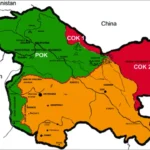New Delhi, May 27, 2025 — In a significant move toward strengthening national security and achieving defense self-reliance, the Government of India has officially approved the development of an indigenous fifth-generation stealth fighter jet under the Advanced Medium Combat Aircraft (AMCA) program. Spearheaded by the Aeronautical Development Agency (ADA) in collaboration with Hindustan Aeronautics Limited (HAL), the project is expected to place India among a select group of nations possessing cutting-edge stealth fighter technology.
A New Era for Indian Air Power
The AMCA program, long in the research and development phase, is now set for full-scale implementation. This approval marks a major milestone in India’s push toward “Atmanirbhar Bharat” in the defense sector, aiming to reduce dependency on foreign military equipment and foster technological sovereignty.
The new fighter jet will be a twin-engine, multirole stealth aircraft designed for air superiority, ground attack, and deep strike missions. Featuring advanced stealth characteristics, supercruise capability, internal weapons bays, and state-of-the-art avionics, the AMCA is expected to rival platforms like the U.S. F-35 Lightning II and the Chinese J-20.
Strategic Importance Amid Rising Regional Tensions
India’s decision comes at a time when geopolitical tensions are rising across the Indo-Pacific region. Neighboring China continues to assert its military dominance through rapid modernization and the export of advanced weaponry to Pakistan, including the J-10CE fighter jets. In this strategic backdrop, the indigenous stealth fighter jet project will significantly enhance India’s aerial capabilities and deterrence power.
Defense analysts have pointed out that this move sends a clear message: India is committed to modernizing its armed forces with indigenous solutions that are tailored to its specific strategic and geographic needs.
Cutting-Edge Technology at the Core
The AMCA will incorporate some of the most sophisticated aerospace technologies ever developed in India:
- Stealth Design: The aircraft will feature radar-absorbing materials and an angular design to reduce radar cross-section.
- Supercruise Engines: Designed for sustained supersonic flight without afterburners, improving fuel efficiency and stealth.
- Advanced Avionics: Including AESA radar, electronic warfare suites, and artificial intelligence-assisted flight management systems.
- Versatile Mission Profile: Designed to perform a wide range of operations, including establishing air superiority, conducting electronic warfare, and executing reconnaissance tasks.
Additionally, the aircraft will be integrated with indigenous weaponry, aligning with India’s broader defense manufacturing objectives.
Production Timeline and Investment
The first prototype of the AMCA is anticipated to be completed by 2028, with flight trials scheduled to commence in 2029. Full-scale production could commence as early as 2031, with the Indian Air Force (IAF) already expected to induct multiple squadrons by the mid-2030s.
The project will be funded through a combination of government grants and strategic partnerships with private Indian defense firms. According to reports, the initial investment is estimated to be over ₹15,000 crore (approximately $1.8 billion USD), covering design, prototyping, and early manufacturing phases.
Boost to Indigenous Defense Ecosystem
The approval of the stealth fighter jet program is anticipated to create thousands of high-skilled jobs and catalyze advancements in India’s aerospace sector. HAL and ADA will work closely with DRDO labs, academic institutions, and over 200 MSMEs (Micro, Small, and Medium Enterprises) in the defense supply chain.
This project also aligns with the “Make in India” and “Defence Export Promotion Policy”, aimed at transforming India into a global hub for defense manufacturing and innovation.
Global Implications
India’s move to develop a fifth-generation stealth fighter indigenously is likely to have geopolitical ripple effects. It could strengthen defense ties with friendly nations interested in co-development or procurement partnerships. Moreover, it places India on a strategic footing in potential future coalition frameworks that rely on high-tech interoperability.
Conclusion
India’s approval of the Advanced Medium Combat Aircraft program is not merely a technological endeavor—it is a bold statement of self-reliance, strategic foresight, and national resilience. As the country accelerates toward becoming a global defense powerhouse, the indigenous stealth fighter jet program stands as a testament to India’s growing aerospace and military capabilities. In the years to come, the AMCA could redefine not just Indian airpower, but the balance of power in the broader Indo-Pacific region.





